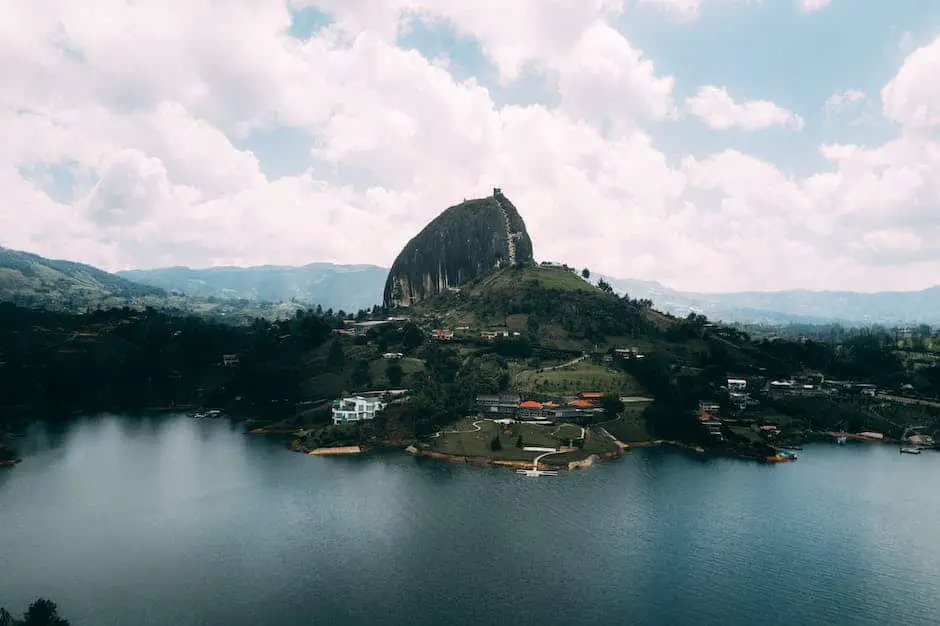
Imagine strolling through the vibrant streets of Medellín, Colombia, where the architecture is as diverse and dynamic as its history. From the traditional Paisa structures to the sleek, modern high-rises, the city’s skyline tells a story of transformation—one that mirrors the resilience and innovation of its people. As someone who’s wandered these streets and marveled at the eclectic mix of styles, I’ve seen firsthand how Medellín’s architecture has evolved from its colonial past to its present-day renaissance.
The Colonial Beginnings
Medellín’s architectural journey began in the colonial era. Back then, the city was dotted with quaint, one-story homes made of adobe and tapia pisada, a traditional rammed earth technique. These homes, with their clay tile roofs and colorful facades, set the stage for a city deeply rooted in Spanish influence. Churches, too, were pivotal to the cityscape, with the Metropolitan Cathedral of Medellín standing as a testament to the grandeur of ecclesiastical architecture.
Industrialization and Growth
Fast forward to the 20th century, and you’d witness a city on the cusp of change. Industrialization brought about a new wave of construction. Factories sprang up, and with them, the need for worker housing. This era saw the rise of simple, functional homes, a stark contrast to the ornate colonial buildings. Yet, it wasn’t just homes that were being built. The city’s first skyscraper, the Carré Building, emerged, hinting at the modern skyline that would soon define Medellín.
Modernism Takes Hold
As the decades rolled on, modernism took hold of Medellín’s architecture. Architects like Rogelio Salmona began to experiment with bold forms and new materials. Concrete became king, and buildings like the Coltejer Tower—a symbol of economic growth—showcased the sleek lines and geometric shapes characteristic of the time. This period was a turning point, as Medellín began to embrace a more cosmopolitan identity.
The Contemporary Canvas
Today, Medellín is a canvas for contemporary architects. The city’s transformation is most evident in areas like the Santo Domingo Savio neighborhood, once notorious for violence, now home to the iconic Spain Library Park. This building, with its striking black cubes perched on the Hillside, is a beacon of the city’s commitment to social urbanism—a philosophy that uses architecture to create inclusive public spaces.
Green Architecture and Sustainability
But it’s not just about aesthetics. Sustainability has become a cornerstone of new projects. Green roofs, eco-friendly materials, and designs that encourage natural ventilation are becoming the norm. The city’s public buildings and infrastructure reflect this shift, with the Green Belt project transforming underused spaces into areas for recreation and environmental preservation.
Medellín’s Architecture: A Reflection of Its People
What truly sets Medellín’s architecture apart is its reflection of the city’s spirit. The resilience of its people is mirrored in the adaptive reuse of spaces, such as the Modern Art Museum of Medellín, which breathes new life into an old industrial building. It’s a city that has learned to reinvent itself, to build beauty from the ashes of its troubled past.
FAQs
- How has Medellín’s architecture contributed to its social transformation?
Medellín’s architecture has played a crucial role in its social transformation by creating public spaces that foster community engagement and inclusivity. Projects like the Metro Cable and public parks have helped to connect and revitalize neighborhoods, reducing crime and improving the quality of life for residents.
- Can you give an example of sustainable architecture in Medellín?
One prime example is the Green Belt (Cinturón Verde) project, which aims to create a network of green spaces around the city to promote sustainability, urban farming, and leisure activities, all while preserving the natural landscape and reducing urban sprawl.
- What architectural styles can be found in Medellín?
In Medellín, you’ll find a mix of colonial, modernist, and contemporary styles. The city’s architecture ranges from traditional Paisa homes to modern skyscrapers and innovative public spaces that showcase the latest in sustainable design.
Conclusion
In conclusion, Medellín’s architecture is a vivid chronicle of its evolution. From the quaint colonial homes to the innovative public spaces that now define the city, each structure tells a story of progress and hope. As a city that has faced its fair share of challenges, Medellín stands as a beacon of urban transformation, where architecture is not just about buildings but about building a better future for its people. For those of us who’ve walked its streets and witnessed its rebirth, the city’s skyline is more than just a collection of structures; it’s a testament to the indomitable spirit of Medellín.
Medellín’s architecture is a testament to the city’s resilience and innovation. It’s a blend of history and modernity, where each building is a brushstroke on the urban canvas. For real estate investors, homeowners, and first-time buyers, the city offers a unique market with a rich architectural heritage and a forward-thinking approach to urban living. As Medellín continues to evolve, its architecture remains a powerful symbol of its past, present, and future.